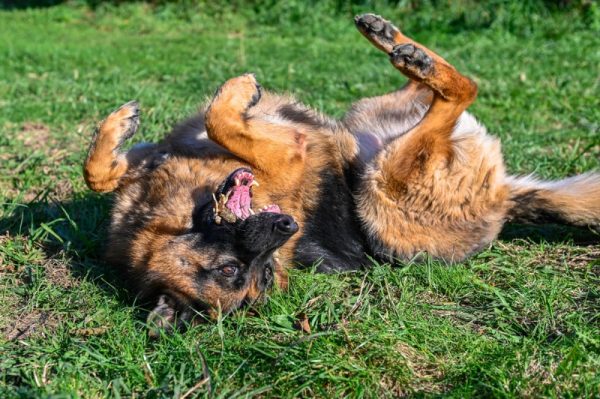A dog collar may be a basic necessity for some, and a major fashion statement for others, but for dogs in most US states, it is a legal requirement.1 Depending on where you live, your dog needs to have a tag that clearly identifies the owner’s name, address, and phone number, a rabies vaccination tag, and city or county licenses, whenever they leave your home. For some dog owners, the easiest way to ensure their dog always has their ID on them is to always leave their collar on. That way, they can’t forget to put it on when they leave the house, and if the dog were to escape, they have their collar and tags in place.
However, leaving a collar on your dog at all times is not without risks, and injuries from collar strangulation can occur. Although death from collar strangulation appears to be rare, wounds, musculoskeletal injuries, and non-lethal asphyxiation can occur. Some sources suggest figures of over 26,000 cases of collar-related injuries per year, but we have been unable to substantiate these claims.
If you want to know the best way to ensure your dog stays safe while wearing their collar, you’ve come to the right place.

How Does Dog Collar Strangulation Occur?
There are several ways that your dog’s collar can inflict damage, usually depending on the style and fit.
Common collar-related injuries:
- Lower jaw caught under the collar
- Paw/limb caught in the collar
- Collar caught on branch/fence/post
- Collar twisted when playing
- Collar too tight
- Pulling on the leash
As you can probably guess, most collar strangulation episodes occur when dogs are unsupervised, even if that’s just out in the yard. So, how can we prevent these sorts of dog collar accidents? Let’s take a look.

How To Prevent Dog Collar Accidents

1. Get the Right Fit
Just as it is dangerous for your dog’s collar to be too tight, there’s also a risk when it’s too loose. We need the Goldilocks of collars: it has to be just right! Make sure you measure your dog to get the perfect fit for them and don’t forget to check it periodically in case it needs adjusting.
2. Remove the Collar at Home
When your dog is safe and secure at home, you can hang their collar up to avoid any collar-related issues. However, if your dog is an escape artist, this might not be the option for you.
3. Use a Breakaway Collar
You might have heard of quick-release collars for cats, but did you know you can also get them for dogs? A quick-release collar is obviously not ideal for attaching a leash to as it will ping off as soon as you walk out the door! But it is an option your dog can safely keep on while at home, on an off-leash run, or in the dog park. You just need to add a separate collar, harness, or slip lead when you head outside.
There are also some styles that you can use for both, where the leash attaches to loops in front of the quick-release clip.
4. Keep It Simple
Tactical collars, cute bows, handles, and other embellishments may have their place, but they may not be ideal when your dog is playing with friends or relaxing at home. Anything that sticks out or has a loop has the potential to get caught in or around objects or in dog’s mouths. Your dog’s ID collar should be simple, and hold nothing but their tags.
5. Check For Hazards
If your dog needs to wear their collar at home, be sure to do regular reconnaissance around the house and yard to look for potential snags like low branches or loose fence posts.
6. Use a No-Pull Collar or Harness
Another way that collars can injure dogs is when they pull too hard on the leash. Teaching your dog to walk well on the leash is an important part of training, but if you have a hound that likes to test the boundaries, try switching to a no-pull harness or collar. These give you excellent control without putting strain on your dog’s neck (or your arm!).
 Final Thoughts
Final Thoughts

Dogs need to wear collars to allow quick and easy identification, as well as having something to restrain them if needed. However, this necessary accessory can be a source of danger, so it’s important to take steps to ensure your dog is safe. Fortunately, there are styles of collars, measurement methods, and precautions you can take to minimize your canine’s risk.
If you’re not sure if your dog’s collar is the right fit, most pet stores are happy to help you find the right style and size for your dog, or you can always go to your vet for advice. And don’t forget to make sure your dog’s microchip details are correct and up to date.
Featured Image Credit: sophiecat, Shutterstock





















